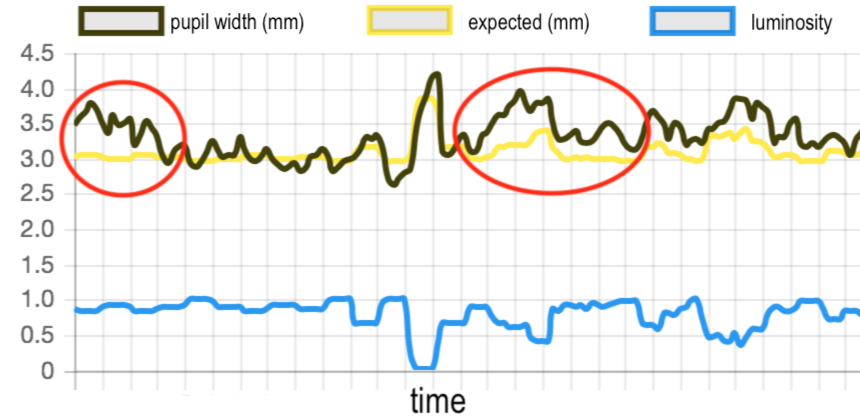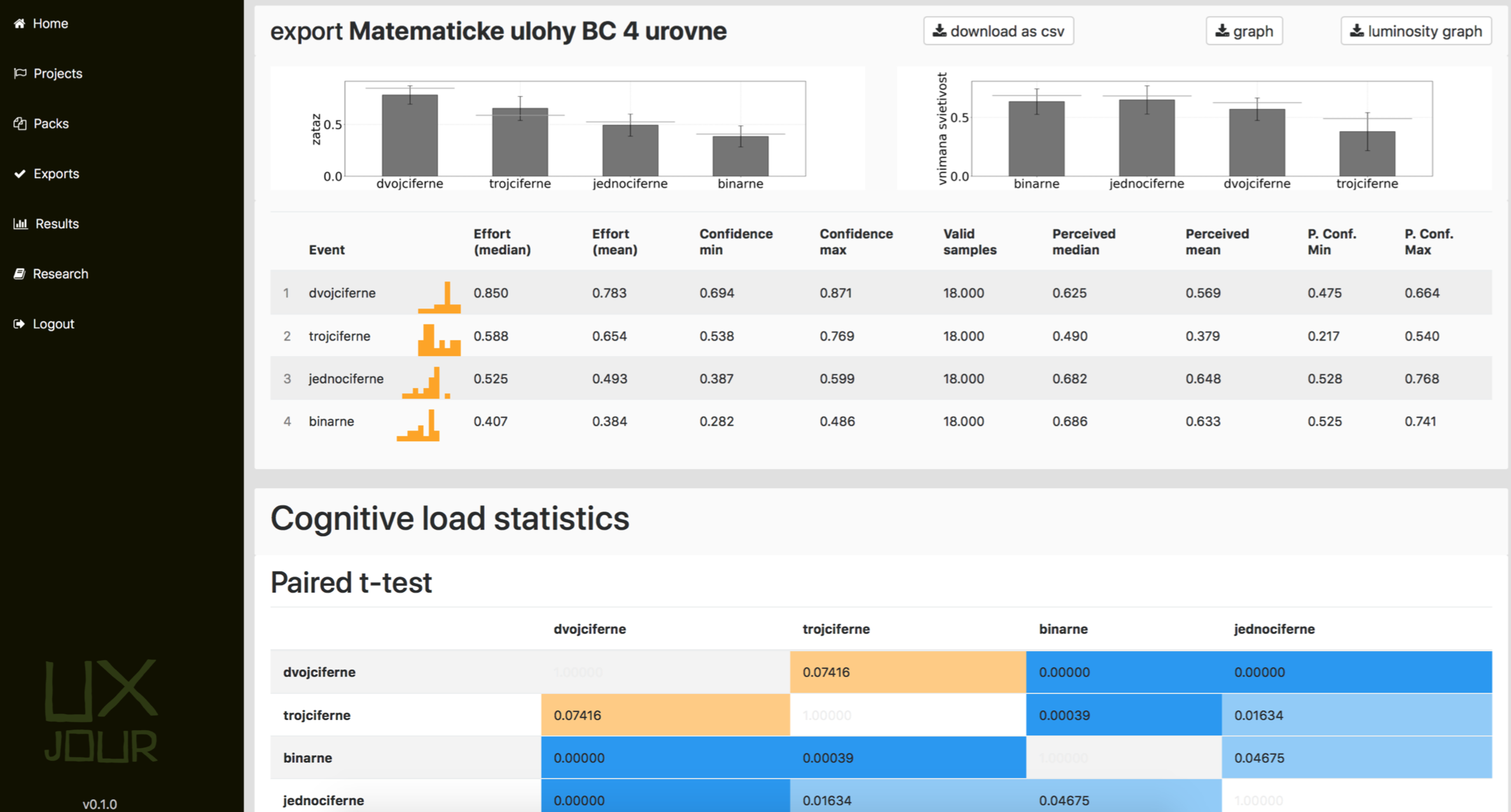|
Cognitive load evaluation as a part Tomáš Juhaniak Master thesis project supervised by prof. Mária Bieliková |
Motivation
User-based studies aimed to detecting problems present in user interfaces can be addressed by various explicit and implicit feedback methods. Basically, problems encountered are reflected in the task completion, prolonging execution time, nervousness, or cognitive load. All these properties can be evaluated with certain accuracy automatically and without explicit feedback. Implicitly obtained feedback does not limit participant’s workflow and allows put himself into simulated situation. The cognitive load, as one of the most important metrics in user testing, can be obtained almost without notice of the participant with an eye-tracker and a pupil dilation.
The pupil dilates in case of increased cognitive load and the dilation intensity correlates with the level of cognitive load. The widening of the pupil also occurs in other situations, like increase of the emotional experience or the light reduction perceived on the eye’s retina. In fact, perceived luminosity is constantly changing. The participant constantly changes his view in the interface with uneven luminosity, which also varies from task to task. This feature prevents the direct determination of cognitive load only by measurements of pupil width, because its value is not the product of a single source.
Our goal is to model the response of the pupil to the light conditions and to predict the width of the pupil at every time of the user study. Before we can determine the value of the perceived luminosity, we need to know what the brightness of the environment is, what interface is displayed on the monitor and what is the point of fixation on the screen.
Method
We have proposed a model, which calculates the luminosity of individual pixels on the screen considering data on the currently displayed stimulus. Subsequently, using the current viewpoint data, we determine the effect of individual pixels on the perceived luminosity as well as the contribution of the luminosity of the environment to the overall perceived luminosity.
After calculating the perceived luminosity, we compare the measured pupil diameter with the expected one predicted by the model. If the predicted value is lower, additional dilation is caused by mental activity. In this way, we divide the reactions of the pupil into changes in luminosity and cognitive load.

Example of increased pupil size at the start of experiment and during problem solving.
We have proposed a model of pupil response to perceived luminosity along with a method of its calibration by observing the actual pupil light reflex. The main components of this model are the relationship between the luminosity and the pupil's width, the relationship between the pixel's distance from the fixation point and its contribution to the overall perceived luminosity, the level of luminosity in the room expressed relative to the luminance of the monitor, and the perceived luminosity of a particular color.
Evaluation
We have performed several experiments to verify the individual parts of the method, such as the ability to model pupil light reflex, detect cognitive effort at homogeneous stimuli or the ability to evaluate perceived luminosity of pixels taking into account the distance from the fixation point. Finally, 21 participants solved the mathematical tasks in three levels of difficulty on the graphic background of real websites divided into 4 luminosity categories, totally 72 tasks.
Our method has successfully recognized differences in the difficulty of tasks on stimuli with the same and different levels of luminosity. Evaluated cognitive load for hard tasks on light stimuli was significantly greater than the cognitive load for easy tasks on dark stimuli, while the actual pupil width for tasks on dark stimuli was significantly greater.

Example of experiment report in developed web application for automatic experiment analysis.
Publications
- Juhaniak, T.
- Cognitive load evaluation as a part of user studies. Master thesis, Slovak University of Technology in Bratislava, May 2018. 72p.
 pdf (in Slovak)
pdf (in Slovak)
| to Homepage | to Teaching | to the Top |
|
||
|
||